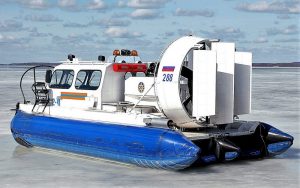Funicular
A funicular is a means of urban or tourist transport, generally used to move on steep slopes. This type of railway runs on rails and the traction of the trains is guaranteed by a cable. It is a means of transport, created during the nineteenth century, which is still used in some ski resorts and in certain cities, in different parts of the world. Among the best known funiculars in the world, we can mention those in Valparaiso, Chile. This Chilean city has twelve funicular lines considered world heritage since 2003. Likewise, in Europe, Prague and Kiev also have their funiculars and the Montmartre funicular in Paris, France, is very popular as well.

Interesting information
- Type of vehicle: Railway
- Year: 1862
- Main uses: Urban and tourist transport
What is a funicular?
A funicular is a type of transport equipped with vehicles that run on rails located on a slope and whose traction is done through a cable. It is usually composed of two vehicles, one ascending and one descending. The weight of the descending vehicle compensates for all or part of the weight of the ascending vehicle. In this way, the energy required for traction is relatively low.
What is the funicular for?
The two main uses of the funicular are as a means of urban transport and as a means of tourist transport.
Urban funiculars can circulate on the surface as trams or in tunnels such as the metro. As far as tourism is concerned, it should be pointed out that many of the employees in winter sports stations have been replaced in most cases by cable cars due to the fact that the latter have a greater capacity.
On the other hand, in addition to being used for transporting people, it is useful for transporting materials of up to 500 tons on slopes of up to 60 degrees.
Characteristics of the funicular
- It is generally built to carry out transport on very steep slopes.
- They run on rails and the traction of the trains is ensured by a cable.
- It is a perpendicular movement device where two vehicles are connected by a cable.
- The ascent of the vehicle parked below means the simultaneous descent of the vehicle parked above. This configuration minimizes the energy needed to operate the funicular.
- In general, the motor that drives the cable is located in the station above the system.
History
The mechanism of using a rope and later a wire rope to carry heavy loads dates back many centuries. This technology was initially used for mining.
In 1808, the Englishman S. Cooke designed a system for transporting mining wagons. This soon became common practice in Newcastle and was applied elsewhere. Thus, years later, two Frenchmen took up this English concept to build four funicular sections in the Lyon region. Thus, in 1862, the first funicular in the world linking Rue Terme with Croix Rousse in Lyon was inaugurated. In the following years, other funiculars began operating in Budapest (1870), Vienna (1875) and Istanbul (1875).
In 1876, the first hydraulic funicular in the United Kingdom was inaugurated, while in 1880, the first funicular with an electric motor in Switzerland came into operation.
Parts
- The cable: the cable assures the traction of the vehicles that by gravity action, tension it naturally. Its diameter can be long and can reach up to 70 meters.
- Vehicles: these are usually equipped with seats. Vehicles are also built with non-flammable materials.
- The track: the track of a funicular is similar to the track of a railway. They are rails mounted on wooden or concrete tracks. This track can be built on the ground, underground or aerial.
How it works
In general, two vehicles are hung or hooked on the same cable, making the journey at the same time: one climbs while the other descends. The vehicle that descends pulls the one that climbs thanks to gravity. Depending on the type of funicular, there are differences in its operation which are explained below:
- Electric funicular: an electric motor compensates for energy losses due to friction and the difference in weight between the two cabins. Some modern funiculars have independent cabins, each powered by a large electric motor. An example of this case is the Montmartre funicular railway in Paris.
- Hydraulic funicular: these work differently. Under each cabin there are water tanks that are filled as needed. It is the weight of the water that drives the whole. Some historical European funiculars maintain this system. For example, the Bom Jesus funicular in Braga, Portugal, or the Wiesbaden funicular in Germany.
Difference between the cable car and the funicular
Sometimes, the funicular is confused with the cable car, but its operation is actually different. The cable car is a cable traction transport system, but in this case, the cabin is suspended by a cable or several fixed cables. This type of cable carrier is also called rail cable because of its function.
How to cite this article?
Briceño V., Gabriela. (2019). Funicular. Recovered on 23 February, 2024, de Euston96: https://www.euston96.com/en/funicular-en/









